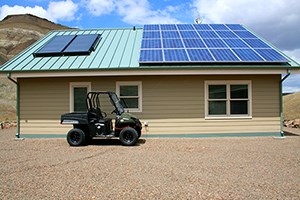
NPS/M. Rose
Minimizing the causes of climate change is often called mitigation, and it involves reducing our "carbon footprint" by using less energy (or shifting to renewable energy) and appropriately altering our land management practices. Mitigation is also achieved through carbon sequestration, a process by which carbon dioxide (CO2) from the atmosphere is taken up by biological and physical processes. The most common form of sequestration is photosynthesis in plants (e.g., tree trunks and roots, grasses, algae), which converts CO2 into biomass. The giant sequoia trees in California and the mangroves along the Gulf Coast are critically important as they pull large amounts of CO2 out of the atmosphere. The National Park Service manages much of the lands that these two species are found on.
The National Park Service is quickly becoming a model of thoughtful and environmentally sensitive climate stewardship. We are doing our part to become climate friendly by reducing our greenhouse gas emissions within park boundaries and at NPS offices and encouraging low-cost efficiency and conservation measures that mitigate climate change.
Last updated: September 30, 2015
